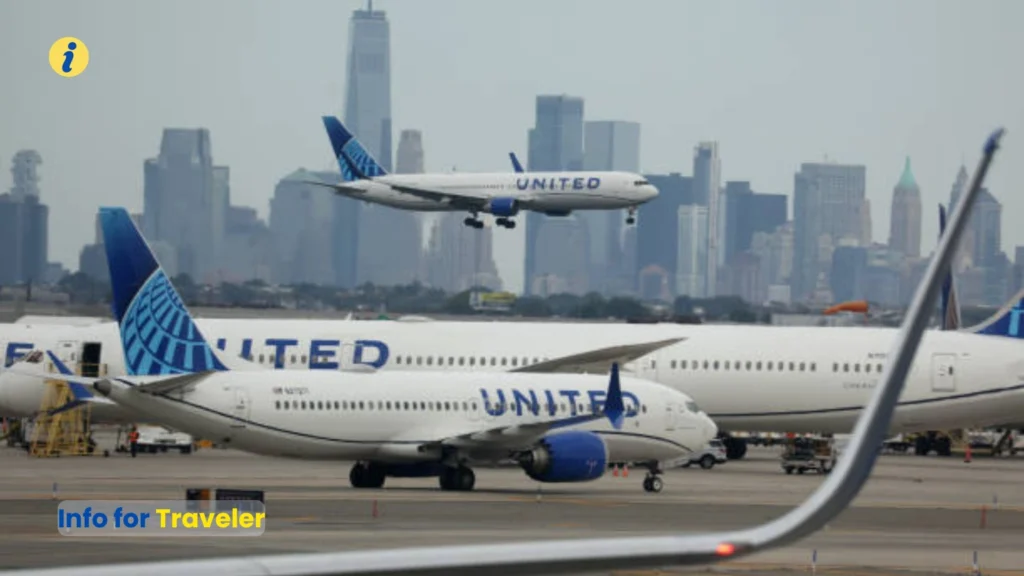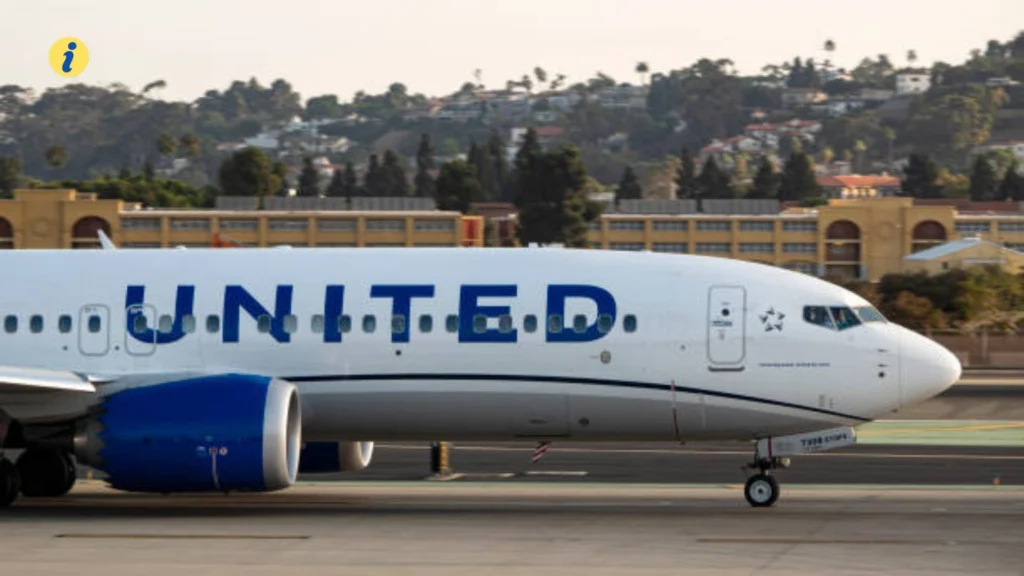United Airlines flight UA770 emergency diversion became a critical aviation incident on May 27, 2025, when technical issues forced an unscheduled landing. This boeing 787-9 aircraft carrying 257 passengers successfully diverted to London Heathrow Airport after declaring squawk 7700. The emergency response demonstrated modern aviation safety protocols working effectively under pressure situations.
The transatlantic flight from Barcelona to Chicago faced cabin pressurization issues that required immediate crew action. United flight tracking systems showed the aircraft maintaining safe altitude while pilots coordinated with air traffic control centers. This comprehensive analysis examines what happened during the ua770 emergency and explores aviation safety measures that protected everyone aboard.
What Really Happened During the UA770 Emergency Diversion?
The United Airlines flight UA770 emergency diversion occurred when cabin pressure systems malfunctioned over European airspace. Flight crews immediately declared an emergency using the international distress code squawk 7700 to alert air traffic controllers. The barcelona flight emergency required quick decision-making as pilots evaluated multiple landing options within their fuel range.
Passengers reported oxygen masks deploying briefly as the aircraft descended to a safer altitude following standard decompression procedures. The boeing 787-9 dreamliner performed exactly as designed during this emergency scenario with backup systems activating automatically. Crew members maintained calm communication throughout the incident while following established emergency protocols for pressurization failures.
The flight data shows that pilots maintained complete control of the aircraft during the entire emergency sequence. Air traffic controllers immediately cleared surrounding airspace and provided direct routing to London Heathrow Airport for landing. Emergency services positioned themselves at the airport while the aircraft approached for what became an uneventful touchdown.
Modern aircraft systems allowed the crew to monitor cabin pressure levels continuously during the descent and approach phases. The United UA 770 successfully landed with all passengers and crew members safe and unharmed. Ground crews conducted immediate inspections while passengers disembarked through normal boarding bridges rather than emergency slides.
Understanding the Technical Causes Behind UA770 Emergency

Aviation experts identified cabin pressurization system malfunction as the primary reason for the ua770 emergency landing situation. Commercial aircraft maintain artificial cabin pressure equivalent to approximately 8000 feet altitude during high-altitude cruise flight phases. When these systems fail, pilots must descend quickly to altitudes where passengers can breathe naturally without supplemental oxygen.
The boeing 787 incorporates multiple redundant pressurization systems designed to prevent complete system failures during normal operations. However, when primary systems indicate potential problems, flight crews are trained to treat the situation as emergency. This conservative approach prioritizes passenger safety over schedule considerations or operational convenience factors.
Aircraft maintenance records will be thoroughly examined to determine whether any warning signs preceded this pressurization system failure. Modern predictive maintenance programs monitor component performance to identify potential issues before they affect flight operations. The federal aviation administration requires detailed investigation of all emergency diversions to improve future safety protocols.
Flight crews receive extensive training on pressurization emergencies including recognition of system failures and appropriate response procedures. The ua770 pilots demonstrated textbook emergency management by quickly assessing the situation and taking appropriate action. Their professional response ensured that a potentially dangerous situation remained manageable throughout the emergency sequence.
Passenger Experience During the Barcelona Flight Emergency
Travelers aboard the United Airlines flight UA770 emergency diversion described professional crew behavior and clear communication during the incident. Flight attendants immediately began emergency procedures when oxygen masks deployed in the cabin area. Passengers followed crew instructions calmly while the aircraft descended to safer altitude levels for continued flight operations.
Many passengers reported feeling reassured by the crew’s confident demeanor and regular updates about the emergency situation. Modern commercial aviation training emphasizes passenger management during emergencies to prevent panic and maintain orderly conditions. The cabin crew demonstrated their extensive training through professional behavior that kept passengers calm and informed.
Social media posts from passengers praised the united airlines crew for their transparency and professionalism during the emergency. Flight attendants provided clear explanations about safety procedures while ensuring everyone remained properly seated and secured. The crew’s effective communication helped passengers understand that the situation was under control despite the emergency nature.
Passengers described the descent as noticeable but not frightening due to the pilots’ smooth handling of the aircraft. The boeing 787-9 performed predictably during the emergency descent with minimal turbulence or uncomfortable motion for travelers. This stable flight behavior reflects the advanced engineering incorporated into modern commercial aircraft designs.
Emergency Response Coordination and Air Traffic Control
Air traffic control centers across Europe immediately responded to the UA770 emergency by clearing priority airspace for the diverted aircraft. Controllers coordinated between multiple countries to ensure smooth handoff procedures as the flight progressed toward London Heathrow. This international cooperation demonstrates how aviation safety transcends national boundaries during emergency situations effectively.
The squawk 7700 emergency code triggered automatic alerts throughout the european air traffic control system for immediate response coordination. Controllers rerouted other aircraft to create clear flight paths while maintaining efficient traffic flow in busy airspace. This coordinated response prevented delays for other flights while ensuring the emergency aircraft received appropriate priority treatment.
London Heathrow Airport activated comprehensive emergency response procedures including positioning fire rescue equipment and medical personnel. Airport operations teams coordinated with customs authorities and ground handling companies to prepare for passenger processing. Emergency response planning ensures that airports can handle unexpected arrivals without compromising safety or security requirements.
The successful coordination between flight crews, air traffic controllers, and airport emergency services demonstrates modern aviation’s integrated approach. Communication systems enable real-time information sharing between all parties involved in emergency response coordination efforts. This systematic approach has contributed significantly to commercial aviation’s exceptional safety record over recent decades.
Aircraft Technical Specifications and Safety Features
The boeing 787-9 dreamliner involved in the ua770 emergency incorporates advanced safety systems designed for various emergency scenarios. This wide-body aircraft features multiple independent pressurization systems with automatic backup activation when primary systems malfunction. The dreamliner’s composite construction and advanced systems represent current aviation technology at its finest level.
Modern commercial aircraft undergo extensive testing and certification processes before entering passenger service with major airlines worldwide. Aviation authorities require comprehensive documentation of aircraft performance under simulated emergency conditions during certification testing phases. These requirements ensure that aircraft can safely handle unexpected situations while maintaining structural integrity throughout emergency procedures.
The boeing 787 maintenance program includes sophisticated monitoring systems that track component performance and predict maintenance requirements automatically. Airlines use this data to schedule maintenance activities before components reach failure points that could affect operations. Predictive maintenance programs have significantly improved aircraft reliability and reduced emergency situations in commercial aviation operations.
Flight data recorders captured detailed information about the pressurization system failure and crew responses during the emergency. Modern aircraft generate thousands of data points per minute that investigators analyze to understand exactly what occurred. This comprehensive data collection helps manufacturers improve aircraft designs and refine emergency procedures for enhanced safety.
Investigation Process and Regulatory Response
The federal aviation administration initiated standard investigation procedures following the united airlines flight UA770 emergency diversion incident report. International aviation authorities coordinate investigation efforts when incidents involve aircraft operating across multiple countries and airspace regions. These investigations examine technical factors, crew actions, and operational procedures to identify potential improvements for future operations.
Investigation teams analyze flight data recorder information, cockpit voice recordings, and detailed maintenance records to reconstruct event sequences. Modern aircraft systems provide investigators with extensive data that helps them understand exactly what occurred during emergencies. This analytical approach identifies both successful responses and areas where procedures or training might be enhanced further.
The european aviation safety agency works closely with american investigators to ensure comprehensive analysis of incidents involving aircraft. International cooperation in aviation safety investigations helps share lessons learned across the global aviation community effectively. This collaborative approach ensures that safety improvements benefit airlines and passengers worldwide rather than just individual countries.
Preliminary investigation results typically become available within several weeks of emergency incidents like the ua770 emergency. Final investigation reports may take many months to complete as investigators thoroughly examine all aspects of incidents. These detailed reports become valuable resources for improving aviation safety through enhanced procedures and training programs.
Impact on Flight Operations and Passenger Rights
The UA770 emergency affected multiple flights across european airspace as controllers adjusted traffic patterns for accommodation. Air traffic management systems efficiently handled the emergency aircraft while minimizing disruptions to other scheduled operations. However, some connecting flights experienced delays as airports adjusted arrival and departure schedules temporarily.
United airlines implemented comprehensive passenger assistance programs including alternative flights and accommodation arrangements where necessary for affected travelers. Airlines maintain detailed contingency plans that address passenger needs during irregular operations caused by emergency diversions. These plans ensure travelers receive appropriate assistance while airlines work to resume normal operations efficiently.
International passenger protection regulations require airlines to provide specific assistance during emergency diversions including meals and lodging expenses. The united airlines response to UA770 passengers demonstrated compliance with these regulations during irregular operation situations. Passengers received clear information about their rights and available assistance options during the disrupted travel experience.
Travel insurance policies often provide coverage for expenses incurred due to emergency flight diversions including accommodation and transportation costs. Passengers should review their insurance coverage to understand protection available during emergency travel situations that arise unexpectedly. Many credit cards also provide travel insurance benefits for cardholders during emergency situations.
Aviation Safety Technology and Future Improvements
Modern aircraft incorporate sophisticated monitoring systems that provide pilots with real-time information about aircraft performance throughout flight operations. The boeing 787-9 features advanced diagnostic capabilities that help crews identify and respond to potential issues quickly and effectively. These technological advances continue improving aviation safety by providing better situational awareness for flight crews.
Aviation safety technology continues evolving with developments in artificial intelligence, predictive maintenance, and enhanced communication systems for emergencies. Airlines invest heavily in safety technologies that can prevent emergency situations or improve crew responses when emergencies occur. These ongoing investments reflect the industry’s commitment to maintaining and improving its exceptional safety record.
The ua770 emergency provides valuable data for manufacturers developing next-generation aircraft systems and safety technologies for implementation. Each emergency situation offers learning opportunities that contribute to improved aircraft designs and operational procedures for enhanced safety. This continuous improvement process ensures that aviation safety standards continue advancing over time.
Emergency communication systems continue improving to provide better coordination between flight crews, controllers, and emergency response teams worldwide. These enhanced communication capabilities enable more effective responses to emergency situations regardless of aircraft location or airspace boundaries. International cooperation in developing these systems benefits the entire global aviation community.
Conclusion
The United Airlines flight UA770 emergency diversion demonstrates how modern aviation safety systems and trained professionals work together effectively. The successful outcome resulted from proper crew training, advanced aircraft systems, and coordinated emergency response procedures. This incident reinforces confidence in commercial aviation’s ability to handle unexpected situations while protecting passenger safety.
The boeing 787-9’s performance during the ua770 emergency showcases the effectiveness of modern aircraft safety design and redundant systems. Flight crews followed established procedures while air traffic controllers and emergency services provided excellent coordination support throughout. The professional response at every level contributed to the successful resolution of this potentially serious situation.
Aviation authorities will use lessons learned from the UA770 emergency to enhance safety procedures and training programs further. The industry’s commitment to continuous improvement ensures that each incident contributes to making commercial aviation even safer. This collaborative approach to safety has made commercial flying one of the safest forms of transportation available today.
If you like to discover flight breakthroughs with such research and in-depth analysis, check out this amazing and fresh breakthrough Delta Flight DL275 Diverted LAX: Emergency Landing Analysis
Frequently Asked Questions
What caused the United Airlines flight UA770 emergency diversion?
Cabin pressurization system malfunction forced the emergency diversion to London Heathrow Airport for safe landing.
What type of aircraft was involved in the UA770 emergency?
The aircraft was a Boeing 787-9 Dreamliner carrying 257 passengers and crew members during the incident.
How long did the United Airlines flight UA770 emergency diversion take?
The emergency response and diversion to London Heathrow took approximately two hours from initial emergency declaration.
Were there any injuries during the UA770 Barcelona flight emergency?
No injuries occurred during the emergency diversion and all passengers disembarked safely through normal procedures.
What does squawk 7700 mean in the UA770 emergency context?
Squawk 7700 is the international emergency transponder code that alerts air traffic control to aircraft emergencies.
Did United Airlines provide compensation for UA770 emergency passengers?
United Airlines provided accommodation, meals, and alternative flights following international passenger protection regulations for affected travelers.
What safety features helped during the UA770 emergency landing?
Multiple redundant pressurization systems, oxygen masks, and automated emergency descent capabilities protected passengers during the emergency.
How did air traffic control handle the UA770 emergency diversion?
Controllers cleared priority airspace and coordinated international handoffs to ensure direct routing to London Heathrow Airport.
What investigation followed the United Airlines UA770 emergency?
The FAA and European aviation authorities initiated a comprehensive investigation including flight data analysis and maintenance record review.
How common are pressurization emergencies like UA770?
Pressurization emergencies are rare, but crews train extensively for these scenarios to ensure passenger safety during incidents










